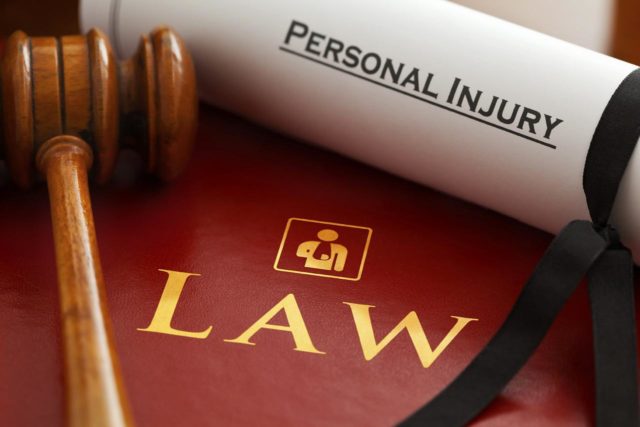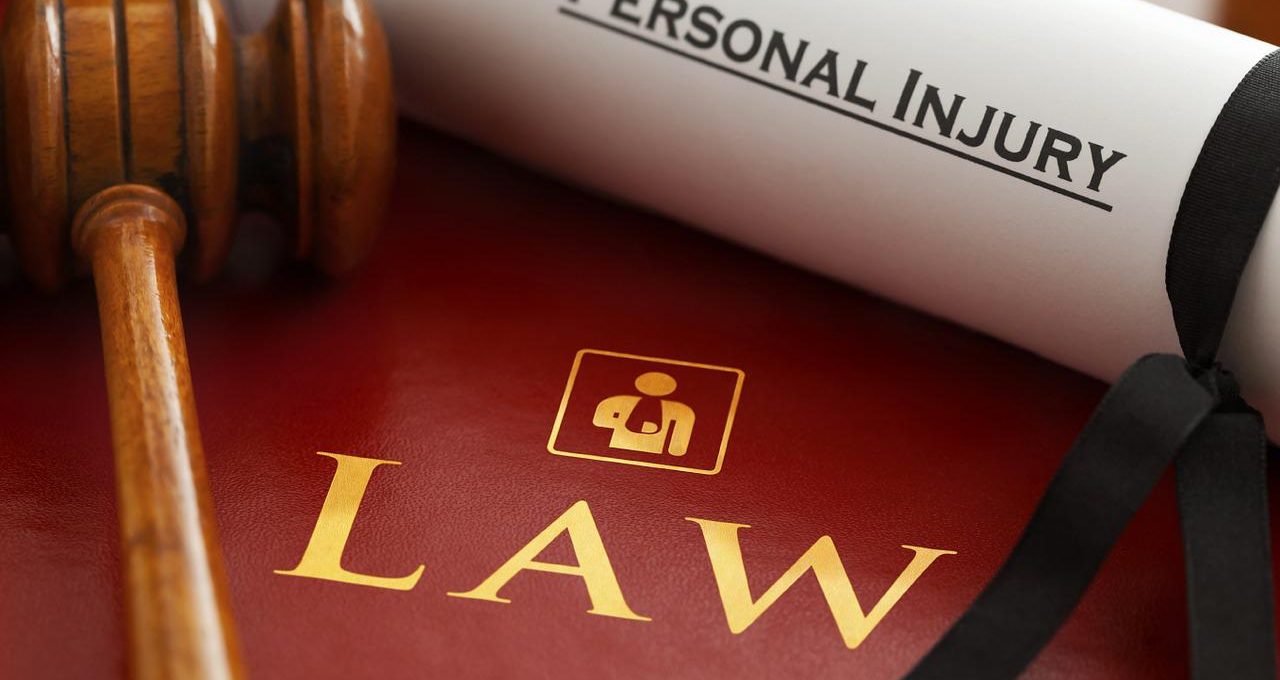America is often described as a litigious country, and there is no shortage of examples of lawsuits that we consider frivolous or foolish. What almost all lawsuits have in common, whether meritorious or not, is that there is a plaintiff and a defendant, and they are two separate entities. Occasionally, however, it turns out that lawsuits are filed in which the plaintiff and defendant are the same person.
10. John Fogerty Sued for Plagiarism
John Fogerty is the legendary lead singer and songwriter of the band Credence Clearwater Revival. They had hits with songs like "Fortunate Son" and "Bad Moon Rising." You'd be hard-pressed to find many movies set in the '60s and '70s that don't have CCR somewhere on the soundtrack.
When Fogerty was working on his solo album in the 1980s, he released a song called “The Old Man Down the Road.” It’s a solid song, and it has that signature Fogerty sound. In fact, it had so much of Fogerty’s signature sound that it was criticizedto court record label , who still owned the rights to his previous work with his band CCR. The basis of their lawsuit was that Fogerty's new song sounded too much like "Run Through the Jungle," which Fogerty, of course, wrote and sang. They were essentially suing John Fogerty on behalf of John Fogerty for ripping off John Fogerty.
In 1988, the jury decided that, no, Fogerty hadn't fooled himself by writing a song that sounded like he'd already written it. By then, Fogerty said he'd spent$400,000 more in legal costs , than even made money off the song itself. Luckily, a few years later, he won a lawsuit against his old label to recoup his legal fees.
9. A man sued himself over his own property

In 1985, Oreste Lodi sued himself . Or at least he tried to. He sued on the grounds that he was the beneficiary of a charitable trust. Plaintiff Lodi wanted to take control from Defendant Lodi. It was suggested that this was some sort of tax scam that he was trying to pull off, as convoluted as that sounds. The problem was that after Lodi served himself with the paperwork, he refused to answer. This meant that he almost had a verdict against himself, but instead his the case was closed This, in turn, prompted him to appeal the decision.
The appeal did not go as far as the court reasoned, and there could be no winner or loser in the case, since both would be the same person. The only benefit Lodi saw was that the court did not force him to pay the legal fees for filing a frivolous lawsuit.
8. Robert Block sued himself for $5 million for violating his own rights

Every now and then you hear a story about a prisoner who studies law while behind bars to help him or her exploit the system to get out of prison again. Maybe it’s to reexamine their own case or to find a precedent that will help them get a lighter sentence. Either way, it takes a lot of time and effort. Robert Block didn’t take that route in his own legal affairs.
Brock was incarcerated at Indian Creek Correctional Center and had served 23 years when he sued himself for $5 million. His argument was that he had gotten drunk before being incarcerated and violated his own civil rights. He had committed a crime while drunk, for which he was sent to prison. For this violation of his rights, he felt he owed himself 5 million dollars But since he was imprisoned, he needed the state to provide money because he could not work and earn money on his own.
His plan was, to highlight 3 million dollars to his wife and children for their pain and suffering, and then another $2 million was to go towards supporting his 23 years in prison. And he was even willing to return it after he got out if the court ordered him to do so. Unfortunately, the court found all this frivolous and rejected it.
7. Barbara Bagley sued herself for wrongful death

In 2011, Barbara Bagley was driving in Utah with her husband, Bradley, when she lost control of her car. No other car was involved, and the details are sketchy, but the car ended up flipping, killing Bagley's husband. Bagley has since filed a negligent homicide lawsuit against herself.
So how does it work? Bagley filed a lawsuit as the representative of her husband's estate. She sought damages to cover funeral expenses, loss of future financial support, the pain her husband must have felt, and her own pain at losing him. Bagley's estate representative filed a claim against Bagley, which was a substitute for her insurance company. In effect, she was suing her own insurance company, arguing that the accident was her fault, so she, by virtue of her insurance, should pay. Her insurance company clearly had no interest in paying precisely because the accident was her fault.
The case was initially dismissed, but Bagley then appealed the decision. The appellate court effectively overturned the first judge's decision, saying there was nothing in Utah law that prevented her from suing herself.
It is unclear how much money, if any, she actually won in the lawsuit. But lawyers have pointed out that under the law creditors get the first dibs, so the lawyers themselves, as well as the hospital that treated her husband and everyone else, should have received money from the estate before Bagley.
6. Herbert Barber sued himself for services he provided to the city

Suing yourself is absolutely not an option in the modern world. You can go back to 1911 and find a case Herbert Barber, who sued Herbert Barber . Barber worked as a tax collector in a town called Warwick. The town didn't pay him for his services, so he filed a lawsuit to get compensation in the amount of $8,250.44 One of the defendants was the city treasurer, whose job it was to see that he was paid. The city treasurer was Herbert Barber.
Surprisingly, Barber did not win and the case was dismissed.
5. Teun van de Keuken sued himself to draw attention to slavery in the chocolate industry.

If you’ve ever seen free trade chocolate for sale, you know that the chocolate industry has a dark side built on child slave labor. In fact, much of the chocolate you eat was likely produced using child slave labor. Journalist Teun van de Keuken learned this in the early 2000s while investigating labor practices in West Africa. He was so moved by what he learned and so eager to spread the word that he came up with a new way to shine a light on the issue.
He ate chocolate and then turnedto the authorities, claiming to have benefited from child slavery. The courts were not impressed and refused to prosecute him, so he hired a lawyer and sued himself. At the same time, he founded a chocolate company, Tony's Chocolonely, to sell chocolate on a free-trade basis, and the company is still going strong today, even though the courts refused to prosecute him.
4. Spanish artist sues himself for right to install scaffolding

Santiago Sirugeda is a man whose work straddles the line between art, performance and architecture, a space that few occupy. He began working with street architecture in the 1990s, including pieces such as waste container rental , and then using them as platforms for building playgrounds, with the city refusing to issue permits for things like swing sets but willing to issue permits for dumpsters.
Later, he came up with a new idea to expand the room in the house by adding on in a similar way. In a project he called Scaffolding , he painted a house with graffiti. He then sued himself for the opportunity to install scaffolding on the same building, allegedly to help remove the graffiti. The scaffolding was attached to the building and used for several months as additional living space for people.
3. One of Donald Trump's companies sued another

Donald Trump is no stranger to lawsuits, and he got so caught up in one that he ended up suing himself. A few years ago, Trump Mortgages LLC set up shop at 40 Wall Street in the Trump Building. Two separate entities, both under the Trump banner. If you remember anything about Trump Mortgages, it might be didn't last long .
Within a year, Trump Mortgages stopped pay rent . So 40 Wall Street LLC was forced to sue Trump Mortgages LLC for non-payment. The mortgage company didn't even respond to the lawsuit, so the judge ordered them to be evicted from the building.
2. Lothar Malskat sued himself for being an art forger

Lothar Malskat had a lot going for him. He had survived World War II, he had an incredible name, and he was an accomplished artist. The problem with the third part was that no one really knew about it. Malskat had worked as an assistant to restorer Dietrich Fey, and the church had hired them to restore some Gothic frescoes that had been uncovered during the bombing.
It took three years to complete, but the restored frescoes became a source of German national pride. They even found their way onto two million postage stamps. Fey was celebrated as a hero and genius for his work. And that's why Malskat sued himself.
Fey got all the money and fame for the murals and many other works. But they were all frauds. Malskat was a counterfeiter, and Fey took credit for his work. The problem was that no one believed him when he exposed himself and his boss. His only option was to sue himself to prove in court that he was, in fact, an artistic genius capable of creating masterpieces.
He pointed out inconsistencies in the so-called restorations. In one, he hid the face of a famous actress. Some of the other figures were guys who worked nearby. In one there were even turkeys , which were not available in Germany at the time the paintings were to be painted.
Malskat received prison term for his efforts. His frescoes were destroyed, and despite his skill, he never achieved fame in later life. But he took everyone with him, so that was something.
1. Peter Maxwell sues himself for work-related injuries

Here's a familiar story. A worker gets injured on the job and sues the company for compensation. They win, and the company writes off the settlement, end of story. So what happens when a self-employed person tries to do the same thing? If you're Peter Maxwell, you're pulling off one of the most audacious but remarkable lawsuits in history.
Maxwell owned a manufacturing company in Chino, California. He worked for a foam flooring company and one day his sweater got caught in the mixing machine. He was seriously injured and so hired a lawyer to help him sue his boss; himself. He hired another lawyer to handle the case on behalf of the company. You'll be surprised to learn that they agreed to settle for $122,500 .
The company wrote off the settlement as a business expense, but the IRS was not amused. They sent Maxwell a bill twice, once as an employee and once as an employer, to recoup the amount. Maxwell went back to court and won when a judge ruled he was entitled to the settlement as well as the right to write off the expense.














Оставить Комментарий